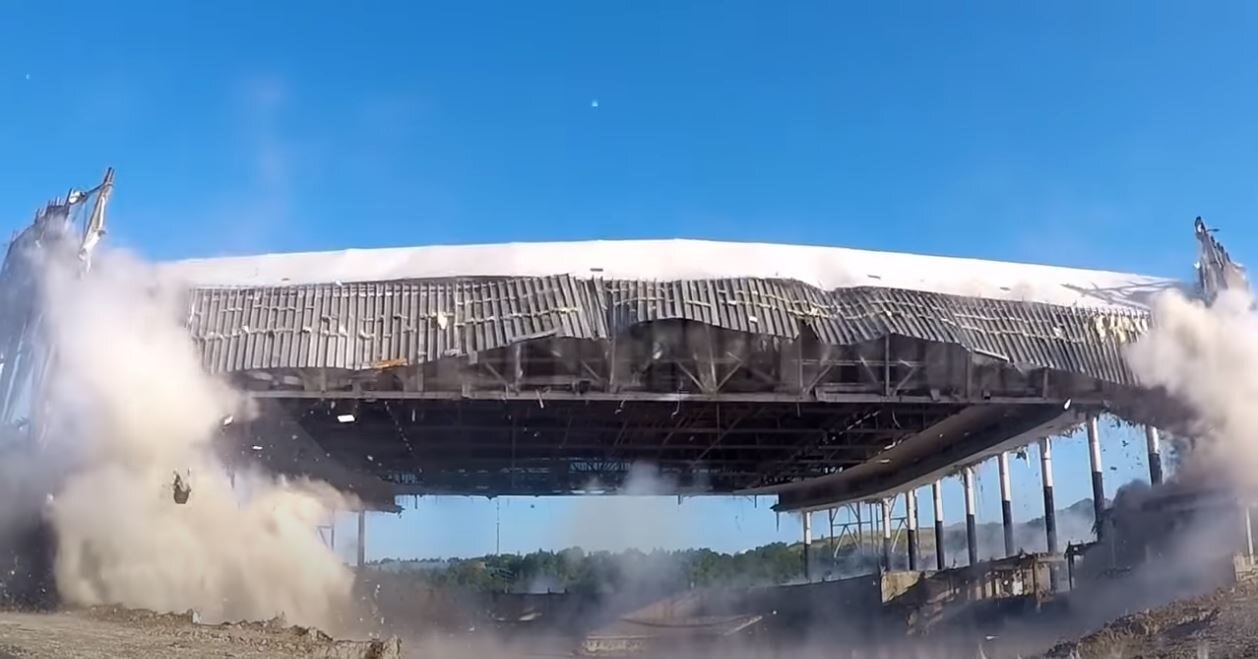
via NY Governor Andrew Cuomo
For almost 80 years, the Old Kosciuszko Bridge connected Brooklyn and Queens in New York. Much like many other bridges its age, it is being replaced due to capacity issues and deterioration. When it was completed in 1939, it was built for 10,000 cars per day. Unfortunately for the people who needed to use that bridge that past few decades, around 180,000 cars used it.
In the beginning of October, the old bridge, which sits next to the partially completed new bridge, was officially imploded, amid fanfare. Twenty-two million pounds of steel, spread across 20 spans (10 on the Brooklyn side, 10 on the Queens side) fell to the earth below after the explosions were triggered by a computer.
All of the steel that was imploded was located above ground, but there were some environmental concerns about the span that was above the Newtown Creek. To avoid this, the center part of the bridge was dismantled and slowly lowered to a barge below. A video of that process can be watched below the video of the implosion.
Now that the old bridge is out of the way, the new Kosciuszko Bridge is expected to be fully complete in the year 2020. The total project contract amount is $554.77 million.
The first video below is drone footage shared by NY Governor Andrew Cuomo on Youtube:
This second video was uploaded to Youtube by the Brooklyn Daily Eagle:
2020 was a stressful year, so let’s decompress a little bit by reviewing some of the most fun demolition videos from the past year. A demolition that broke a 22 year old record highlights the bunch and I also stretch what the definition of “demolition” is a little bit, because I think the video is so cool. Don’t @ me.
Without further ado, here are the top 7 demolition videos from 2020:
Demolition by implosions videos are obviously fun to watch, but the actual process creates an insane amount of dust. The challenge becomes hoe do you douse an enormous structure that falls within seconds with enough water to control dust effectively? The answer might be more explosives…
After finally beginning the demolition of the partially collapsed Hard Rock Hotel in New Orleans, Louisiana in May of this year, the remains of 2 of the 3 workers killed in the incident are still trapped within the building. After working for several weeks to clear a safe path to retrieve the bodies, a lawyer from the development team of the project provided an update recently.
From 1988 to 2017, the Palace of Auburn Hills was home to the Detroit Pistons of the NBA. On July 11, 2020, it was imploded into smithereens, ending a fantastic run for the historic arena.
Power plants are facing demolition all over the world as country’s move away from less environmentally friendly power sources and abandon older facilities. The good news, for us, is that we get some pretty awesome demolition videos out of the shutdowns.
A couple of weeks ago, we followed the very amusing story of the Leaning Tower of Dallas. For those unfamiliar, it all started as an innocent attempt at a building implosion, but ended up becoming an internet meme, a tourism landmark, and the subject of a petition to turn it into a monument. Well, the big joke is over, as what remained of the tower has finally fallen.
Crowds typically swarm to the site of a building implosion; it can be more exciting than a firework show. Sometimes, though, spectators get the thrill of seeing the process not go quite as planned. Dallas residents got tat thrill over the weekend, when an implosion of a high-rise building in Uptown Dallas refused to come all the way down.
We recently posted our list of the Top 7 Demolition Videos of 2019 and it seems as though we now have the first entry for the 2020 list. This video comes from a familiar face: Controlled Demolitions, Inc. (CDI).










In November of last year, the 546 foot tall Mina Plaza in Abu Dhabi officially broke the world record for tallest demolition by explosion, supplanting Hudson Department Store in Detroit, Michigan, which held the record for 22 years.